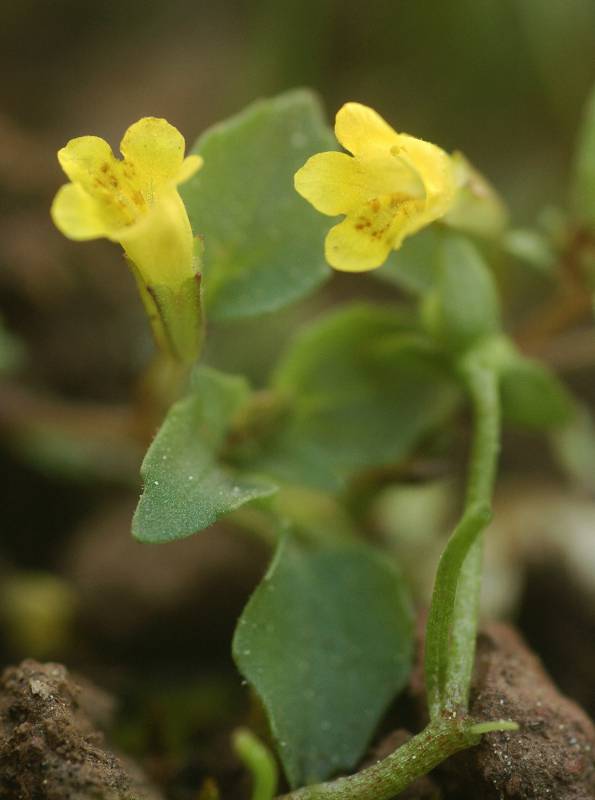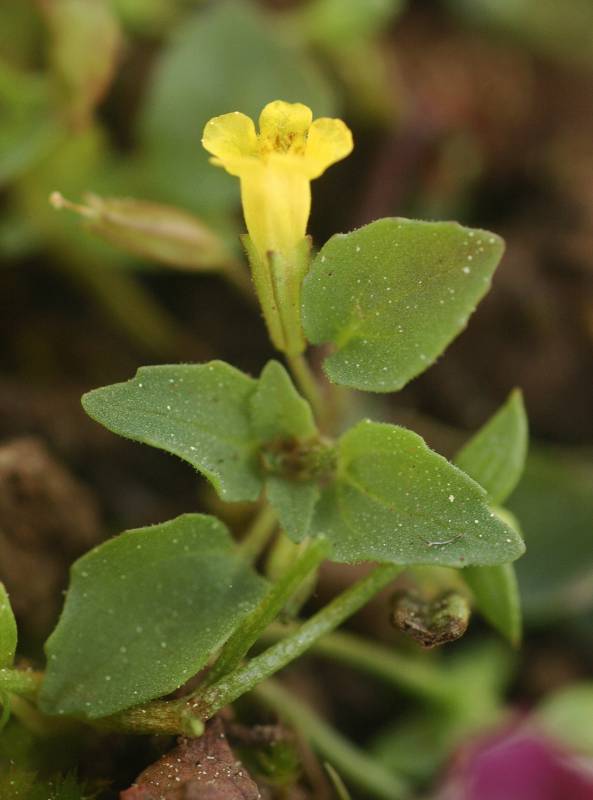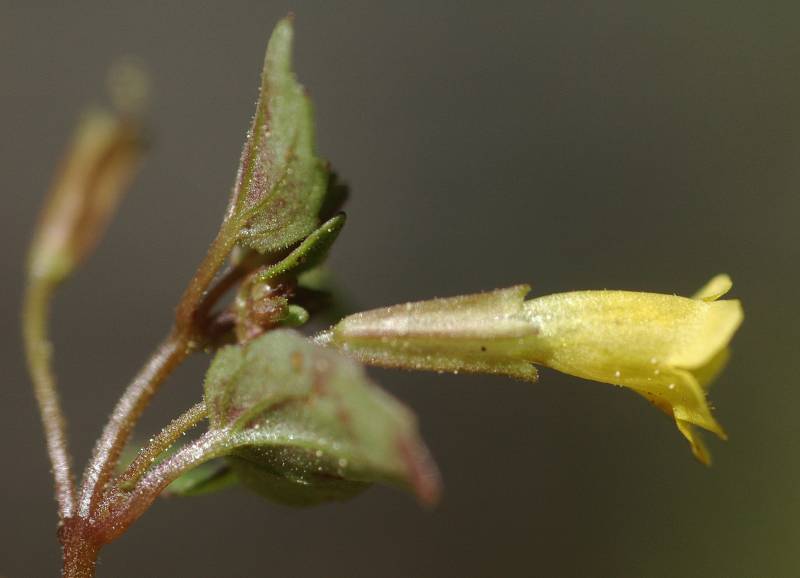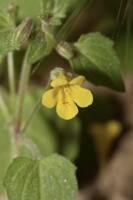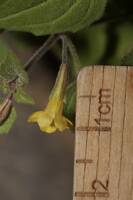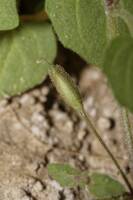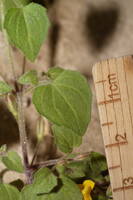Distribution: Occurring east of the Cascades crest in southeastern Washington; southeast Washington to adjacent northeast Oregon and adjacent west-central Idaho.
Habitat: Vernally moist areas, seeps, and stream banks from the lowlands to the middle elevations.
Flowers: May-July
Origin: Native
Growth Duration: Annual
Conservation Status: Threatened in Washington (WANHP)
Annuals with fibrous roots or a filiform-taproot; stems usually 5-15 cm, erect to ascending, straight or sharply bent at nodes, usually unbranched, covered with stalked glands, gland-tipped hairs 0.2-0.5 mm.
Leaves cauline, basal ones not persistent; petioles 8-25 mm; blade deltate or somewhat ovate to lanceolate, approximately 4-12 mm long and 3-10 mm broad, palmate venation with 3 veins, base rounded to cuneate-truncate, margins usually finely toothed, apex acute to obtuse, surfaces glabrous as stems.
Axillary flowers 1-10, emerging from nodes throughout; fruiting pedicels 10-25 mm, glandular as stems; calyx tubular, barely or not inflated, 5-6 mm, margins with distinct teeth or lobes, slightly stipitate-glandular to sparsely hirtellous, lobes pronounced, erect; corollas yellow, lower limb commonly with some red or brownish dots, symmetric radially or bilaterally, regular or weakly bilabiate; tube-throat funnel-shaped, 7-8 mm, protruding beyond calyx margin; lobes oblong, apex rounded to truncate; styles glabrous; anthers not protruding, glabrous.
Capsules 4-6 mm, included.
Publication: Phytoneuron 2012-39: 1–60. 2012.
PNW Herbaria: Specimen records of Erythranthe patula in the Consortium of Pacific Northwest Herbaria database
WA Flora Checklist: Erythranthe patula checklist entry
OregonFlora: Erythranthe patula information
E-Flora BC: Erythranthe patula atlas page
CalPhotos: Erythranthe patula photos

